- Wedge Concrete Anchors Bolts
- Concrete Sleeve Anchors Bolts
- Split Drive Concrete Anchors Bolts
- Stud Concrete Anchors Bolts
- Lag Shield Concrete Anchors Bolts
- Self Drilling Concrete Anchors Bolts
- Drop-In Concrete Anchor Bolts
- Machine Screw Anchors Bolts
- Strike Anchors Bolts
Table of Contents
Wedge Concrete Anchors Bolts
The wedge concrete anchor is called to open the wedge that opens and expands from anchor bass to 1/16. When the bolt is enhanced. This is a male concrete anchor used to fix the concrete floor using nuts and washers. Wedge concrete anchors are also very easy to insert and are widely used among corrosion steps and the most severe concrete anchors.
In practice, they consist of two adjacent items, threads at the top, and other ends are configured as a process that includes a clip that extends between the walls of the wedge and the walls of the concrete.
Wedge concrete anchors are usually a good option for heavy shift applications and heavy loads. Also, in areas where earthquakes are visited by earthquake activities.
We must remember some things about the Wedge anchor. For wedge anchors, concrete holes must be like an anchor diameter. It is also used in a solid Belon, not only a stone, solution, and bricks.

Concrete Sleeve Anchors Bolts
Concrete sleeve anchors are male threaded fasteners, consisting of an expansion sleeve at the top end and a screw bolt wound with a washer and nut at the other end.
Sleeve anchors are screwed into pre-drilled holes in concrete, stone, brick, and mortar through fasteners.
Turning the bolt on the nut pulls the bolt up through the bushing, extending the bushing 1/8 inch.
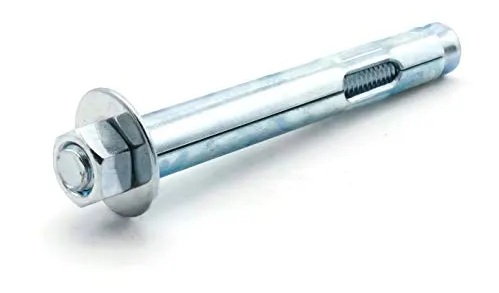
Split Drive Concrete Anchors Bolts
These split-drive concrete anchors obtain their holding force from a source of elastic construction of a single anchor part itself.
Also, this anchor is a fork fastener with a detachable extension base. Generally suitable for light work and suitable for block, concrete, brick, and stone substrates.
The most important thing to remember when installing a split drive concrete anchor is The base diameter of the anchor is the same as the drill hole.

Stud Concrete Anchors Bolts
Concrete sleeves and wedge anchors are used as draw nuts so that the anchor extends a lot with respect to the side of the hole or wall. The stud anchor is also extended. However, when extending the stud anchor, you must hammer the top of the anchor. At this time, the expansion anchor is screwed into the top and has a vertical slot at the bottom.
There is a hole in the bottom of the anchor rod that is fixed to the conical steel plug. Hitting the top of the stud with a hammer causes the bottom of the steel stud to rest on the tapered steel. This causes the pin to expand proportionally to the side or wall of the hole.
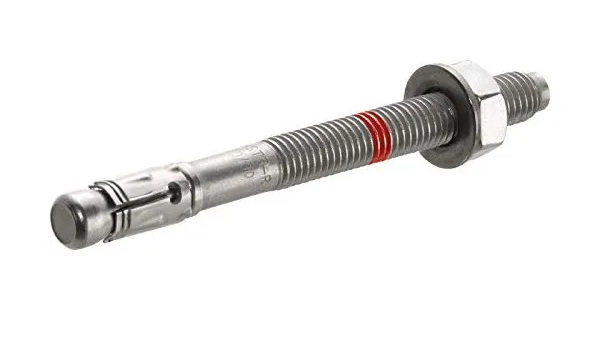
Lag Shield Concrete Anchors Bolts
Lag concrete anchors are anchors that are threaded on the inside and are tapered and ribbed in shape and texture.
Anchor sleeves for concrete racks are made of zinc alloy material and the sleeves are simple in nature. These bushings are placed on a pre-drilled floor that can be made of mortar, concrete, brick, stone, etc.
This screw goes inside and expands the zinc sleeve and then cuts the threaded part of the anchor. It is a lag concrete anchor that is pressed into the outer wall of the main material. Depending on the diameter of the bolt that will fit inside the screw, the lag concrete anchor is calculated according to the built-in length.
In general, longer lag anchors have a stronger and more suitable bond that holds the base material in place.
Concrete anchor racks, on the other hand, are sometimes short and sometimes dense and rigid.
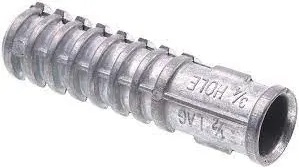
Self Drilling Concrete Anchors Bolts
Self-Drilling Concrete Anchor is a proposed name because the anchor itself has its own teeth, which means drilling a hole in the concrete floor itself.
The top of this anchor also has an internal thread and a conical steel plug. So this bolt can be easily tightened.
If the cover is drilled into the conical steel plug with a hammer, the lower end of the cover will eventually expand and contact the wall or side of the hole.
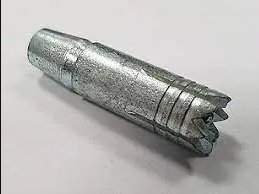
Drop-In Concrete Anchor Bolts
You may be confused with wedge anchors because they expand in the same way, and are female threaded anchors that are placed in pre-drilled holes.
The extension plugs in the anchor base are installed using an installation tool, which is a tapered steel rod.
The tapered end of the tool is inserted into the drop-in anchor and hammered until the edge of the anchor meets the protrusion of the setting tool.
Like wedge anchors, insert anchors are only for hard concrete and cannot be effectively used for brick, block, mortar, or stone.
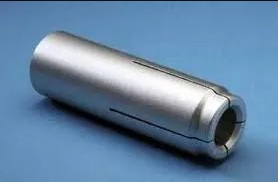
Machine Screw Anchors Bolts
The machine screw anchor is a female anchor, and this type of fastener consists of a cylindrical base inserted into a dominant role in a brick, mortar, stone, and concrete. This anchor screw is used to screw the thread through the fixed device and the base and the hole and the installation tool is used to rotate the screws.
If it occurs in the screw, the base for attaching an anchor to the hole is expanded and fixed to the concrete surface. Each screw anchor of the machine has a specific set tool determined by the diameter of the machine screw anchor. Anchors are installed correctly when the lips of the installation tool correspond to the armature lips. But most importantly, for anchors with machine screws, the required hole size is larger than the size of the anchor used.
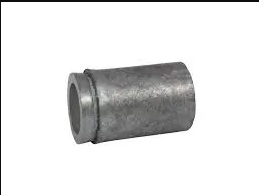
Strike Anchors Bolts
Strike anchors are male fasteners and are used to attach light lines such as shelves, pipelines, and electric boxes for solid concrete.
An anchor Strike is an extension of an expansion strike consisting of a limited table body by a drive pin extending from a tubular casing.
Once the strike coupling is inserted into the dominant hole, the pinhead of the tube moves through the hammer expanding the tube and creating the necessary maintenance in the hole.
The diameter of the opening must be pierced against the strike anchor and the diameter such as the use of an anchor.
With impact anchors, you can quickly install the long jogging of the lamp, but are not removed after deployment.

